27 F. high in the Twin Cities on Thursday.
26 F. average high on February 4.
15 F. high on February 4, 2015.
7" snow on the ground at KMSP.
February 5, 1834: Unseasonably mild temperatures are felt at Ft. Snelling with a high of 51.

In Praise of Snow - Minor Cold Slap Next Week
There is something magical about snow, especially watching it from your family room window, not stranded on I-35. It's nature's do-over, a fresh start, a clean sheet of white wonder as far as the eye can see.
A heavy blanket of snow has many benefits, insulating your garden and protecting small animals. A deep layer of snow can help soil manage temperature extremes, critical for some plants, including evergreens. Remember this the next time you're adrift in a snowy sea of brake lights during a soul-sucking commute.
Good news for the Loppet in Minneapolis this weekend: in spite a little compaction from Tuesday's record snow we should keep 6-10 inches on area trails.
Wait, snow on the ground, roads in good shape? For a brief moment in time everyone is happyish.
GFS guidance pulls 40s into Minnesota in about 2 weeks, so make the most of the snow while you can. A clipper will whip up strong winds late Sunday; blowing & drifting is likely outside the metro.
Next week will feel like midwinter with 1 or 2 nights near 0F.
Not a prolonged arctic intrusion, just a taste this time.

- Present streamflows are high to very high relative to historical flows for the date.
- Soil profiles are moist to saturated in most areas.
- The high stream discharge and moist soils are due to record-breaking high precipitation totals in November/December.
- Frost depths are shallow relative to historical values due to very warm early-winter temperatures..."
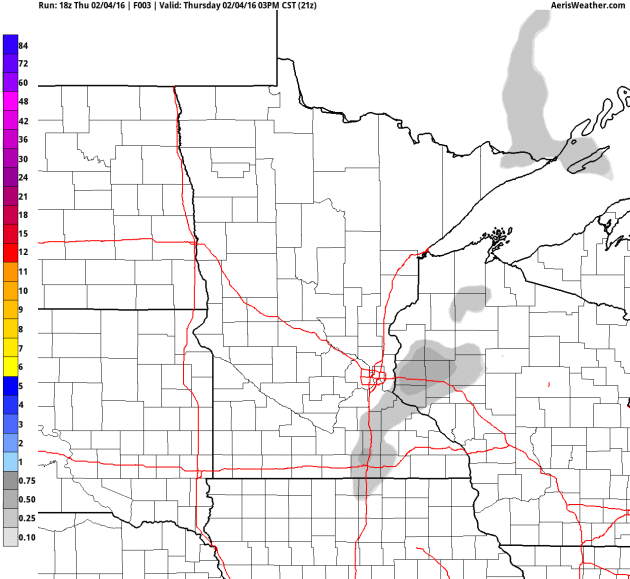
Here are a couple more, courtesy of the Midwest Regional Climate Center:
http://mrcc.isws.illinois.edu/
http://mrcc.isws.illinois.edu/

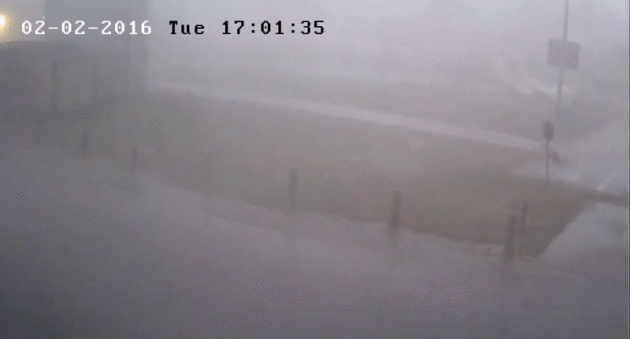
Severe Storm Reports since January 27 courtesy of NOAA and AerisWeather.
Climate Data Now Key to Disaster Preparedness, First Responders Say. Here's an excerpt from InsideClimate News that got my full attention: "...Natural
disasters such as flooding, hurricanes, drought and snowstorms have
become more frequent or more intense due to climate change in recent
decades, the experts said. In the 1980s, the U.S. averaged 29 disaster
declarations per year. That average jumped to 74 per year In the 1990s
and 127 per year in the 2000s. Nimmich, Spinrad and Livingston said
shifting demographics—more people moving toward the coast and waterways
directly in harm's way of most extreme weather—has also played a role in
the cost and severity of recent natural disasters.
Extreme weather today "is literally biblical in nature," said Spinrad.
And because greenhouse gas emissions linger in the atmosphere for long
periods of time, "we will have many decades to centuries of these
continued [weather] patterns. It is a new normal, if you will..."
Photo credit above: "South Carolina's epic floods in 2015 served as a vivid reminder of climate change's impact on extreme weather." Credit: U.S. Coast Guard via Flickr
Higher Temperatures Make Zika Mosquito Spread Disease More. Another compelling reason why warming matters; here's an excerpt from The Associated Press: "The mosquito behind the Zika virus seems to operate like a heat-driven missile of disease. The hotter it gets, the better the mosquito that carries Zika virus is at transmitting its buffet of dangerous illnesses, scientists say. Although it is too early to say for this outbreak, past outbreaks of similar diseases involved more than just biology. In the past, weather has played a key role, as have economics, human travel, air conditioning and mosquito control. Even El Nino sneaks into the game. Scientists say you can't just blame one thing for an outbreak and caution it is too early to link this one to climate change or any single weather event. As the temperature rises, nearly everything about the biology of the Aedes aegypti mosquito — the one that carries Zika, dengue fever and other diseases — speeds up when it comes to spreading disease, said entomologist Bill Reisen of the University of California Davis..."
Map credit: Vox, and Elife Sciences.org. "Global map of the predicted distribution of Aedes aegypti, one of the types of mosquitoes that spread Zika."
Ample Grain Stocks Could Dampen Impact of El Nino/La Nina Shift. Will we head into La Nina, a cooling phase of the Pacific, which correlates with a higher risk of late summer drought? Too early to tell. Here's an excerpt from Reuters: "When El Nino gives way to its little sister, La Nina, this year, as meteorologists are forecasting, the disruptive weather patterns may still be unable to disperse the bearish clouds that have hung over U.S. grains markets for years. Corn and soybean futures have gone haywire in past transition years, with prices soaring as yields withered. But plentiful supplies, both overseas and domestically, should provide a buffer against any disruptions this year and dampen any market rallies..."
Photo credit above: "A truck is loaded with corn next to a pile of soybeans at Matawan Grain & Feed elevator near New Richland, Minnesota October 14, 2015." Reuters/Karl Plume.
Photo credit above: "France has announced it will lay 1,000km of solar roads to power millions of homes." Colas.
Photo credit: "The outside of the Wendelstein 7-x stellarator with its conglomeration of equipment, ports, and supporting structure." (Credit: IPP, Bernhard Ludewig).
Image credit above: "Tesla’s Powerwall captured attention at its launch, but the lithium-ion batteries it’s based on are just one of a host of energy storage technologies taking root in the UK." Photograph: Patrick T. Fallon/REUTERS.
We're Drowning in Cheap Oil, Yet Still Taxpayers Prop Up This Toxic Industry. George Monbiot has an Op-Ed at The Guardian; here's an excerpt: "...Strangely,
the same rules do not apply to the oil companies. Your friends get
protection. The free market is reserved for enemies. Yes, I do mean
enemies. An energy transition threatens the kind of people who attend
the Conservative party’s fundraising balls. It corrodes the income of
old schoolfriends and weekend guests. For all the talk of enterprise,
old money still nurtures its lively hatred of new money, and those who
control the public purse use it to protect the incumbents from the
parvenus. As they did for the bankers, our political leaders ensure that
everyone must pay the costs imposed by the fossil fuel companies –
except the fossil fuel companies. So they lock us into the 20th century,
into industrial decline and air pollution, stranded assets and –
through climate change – systemic collapse..."
Illustration credit above: ‘Oil
companies have already been granted ‘ministerial buddies’ to ‘improve
access to government’ – as if they didn’t have enough already.’ Illustration: Andrzej Krauze.
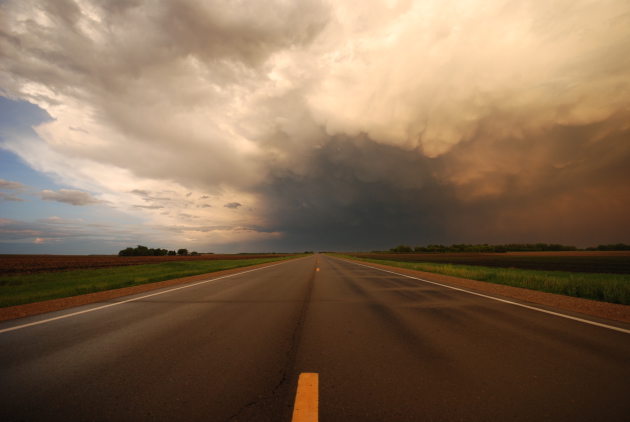
A Bicycle Helmet Made of...Wood? Here's another clip that caught my eye; courtesy of gizmag.com: "...Known
as Cellufoam, the shock-absorbing foam in the helmet is said to be
similar to Styrofoam – except it comes from a renewable source, and it's
biodegradable. Like similar products we've covered before, it's made by
mixing a foaming agent with cellulose nanofibers derived from forestry
industry byproducts. This means that trees don't need to be cut down
specifically for foam production..."
Photo credit above: "The helmet features a wood outer veneer, wood-based foam on the inside, and paper straps." (Credit: Rasmus Malbert).
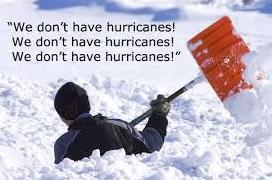
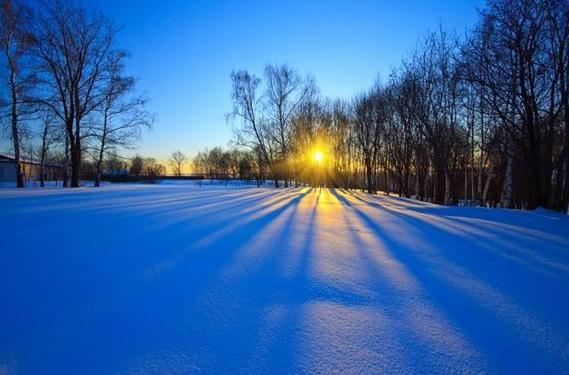
TODAY: Coating of light snow. Winds: S 8-13. High: 26
FRIDAY NIGHT: More flurries - a few slippery spots. Low: 21
SATURDAY: Mostly cloudy, PM thaw still on track. Winds: SW 7-12. High: 33
SUNDAY: Mild start, snow/drifting late PM? Winds: NW 15-30 (late PM) Wake-up: 28. High: 34
MONDAY: Cold wind, few flurries in the air. Winds: NW 15-25. Wake-up: 15. High: 18
TUESDAY: Mostly cloudy, feels like -5F. Winds: NW 10-20. Wake-up: 1. High: 10
WEDNESDAY: More sun, still deliriously numb. Winds: NW 7-12. Wake-up: -3. High: 12
THURSDAY: Cold start, chance of flurries. Winds: S 8-13. Wake-up: 2. High: 22
SATURDAY: Mostly cloudy, PM thaw still on track. Winds: SW 7-12. High: 33
SUNDAY: Mild start, snow/drifting late PM? Winds: NW 15-30 (late PM) Wake-up: 28. High: 34
MONDAY: Cold wind, few flurries in the air. Winds: NW 15-25. Wake-up: 15. High: 18
TUESDAY: Mostly cloudy, feels like -5F. Winds: NW 10-20. Wake-up: 1. High: 10
WEDNESDAY: More sun, still deliriously numb. Winds: NW 7-12. Wake-up: -3. High: 12
THURSDAY: Cold start, chance of flurries. Winds: S 8-13. Wake-up: 2. High: 22
Climate Stories...
Glaciologists Anticipate Massive Ice Shelf Collapse. Other than that things are going quite well in Antarctica. Here's an excerpt from University of Alaska Fairbanks: "A team
of researchers is traveling to a rocky outcrop in Antarctica to study a
massive ice shelf that could crash down around them before the end of
March. University of Alaska Fairbanks glaciologist Erin Pettit said that
an ice shelf about 1,000 feet thick and a third the size of Rhode
Island is on the verge of shattering into millions of icebergs during
February or March, the end of Antarctica’s summer. If it does, the lead
researcher and her team will be within viewing distance in a place they
hope doesn’t live up to its name — Cape Disappointment..."
Image credit above: Ted Scambos. "A
Landsat image from Jan. 6, 2016, shows summer conditions of the fast
ice, glaciers and ice shelf in the Scar Inlet region of Antarctica."
El Nino and Global Warming - What's the Connection? Phys.org has a story that attempts to connect the dots; here's an excerpt: "...The
science here isas yet inconclusive. One 2014 study suggests that super
El Nino events could double in the future due to climate change. Using
20 climate models to examine possible changes in El Nino over the next
100 years, the scientists projected that extreme El Nino events could
occur roughly every 10 years instead of every 20..."
Image credit above: "A visualization of El Nino". Credit: NOAA/Stuart Rankin.
Image credit above: "A visualization of El Nino". Credit: NOAA/Stuart Rankin.
The science here is as yet inconclusive. One 2014 study suggests
that super El Niño events could double in the future due to climate
change. Using 20 climate models to examine possible changes in El Niño
over the next 100 years, the scientists projected that extreme El Niño
events could occur roughly every 10 years instead of every 20.
Lisa Goddard, director of the International Research Institute for Climate and Society, finds the study interesting, but questions its conclusions because observational evidence of El Niño only goes back a few decades, whereas scientists know that there is a great deal of natural variation in El Niño events over long periods of time. Moreover, said Goddard, "The models have limitations in their representation of El Niño and its variability."
Read more at: http://phys.org/news/2016-02-el-nino-global-warmingwhat.html#jCp
Lisa Goddard, director of the International Research Institute for Climate and Society, finds the study interesting, but questions its conclusions because observational evidence of El Niño only goes back a few decades, whereas scientists know that there is a great deal of natural variation in El Niño events over long periods of time. Moreover, said Goddard, "The models have limitations in their representation of El Niño and its variability."
Read more at: http://phys.org/news/2016-02-el-nino-global-warmingwhat.html#jCp
The science here is as yet inconclusive. One 2014 study suggests
that super El Niño events could double in the future due to climate
change. Using 20 climate models to examine possible changes in El Niño
over the next 100 years, the scientists projected that extreme El Niño
events could occur roughly every 10 years instead of every 20.
Lisa Goddard, director of the International Research Institute for Climate and Society, finds the study interesting, but questions its conclusions because observational evidence of El Niño only goes back a few decades, whereas scientists know that there is a great deal of natural variation in El Niño events over long periods of time. Moreover, said Goddard, "The models have limitations in their representation of El Niño and its variability."
Read more at: http://phys.org/news/2016-02-el-nino-global-warmingwhat.html#jCp
Lisa Goddard, director of the International Research Institute for Climate and Society, finds the study interesting, but questions its conclusions because observational evidence of El Niño only goes back a few decades, whereas scientists know that there is a great deal of natural variation in El Niño events over long periods of time. Moreover, said Goddard, "The models have limitations in their representation of El Niño and its variability."
Read more at: http://phys.org/news/2016-02-el-nino-global-warmingwhat.html#jCp
Is Global Warming Behind D.C's New Era of Great Snowstorms? 7
of the 10 biggest snowfalls in Washington D.C. since 1889 have taken
place since 1979. Jason Samenow has a fascinating post at The Capital Weather Gang; here's an excerpt that got my attention: "...As
Capital Weather Gang’s Ian Livingston put it: “It seems the tempo of
big storms for the city has increased.” The flurry of recent blizzards
is even more impressive farther north:
 Will Climate Change Move Agriculture Indoors? And Is That a Good Thing? Here's a snippet of an interesting story at Grist: "...It’s
this indoor farming future that Allison Kopf, founder and CEO of the
agricultural technology startup Agrilyst, is curious about. In an indoor
farm, water doesn’t inconveniently evaporate. LED lights can lengthen
the hours of sunlight so plants can grow faster. CO2 levels can be
tweaked. Even as the weather outside goes haywire, plants farmed indoors
can live out an optimized version of the weather that they coevolved
with — the weather of the past. The best weather of the past. Or, as
Kopf calls it, a “weather-independent environment.” Kopf’s journey to
greenhouse tech was an unexpected one..." (Photo credit: Horticulture Group).
Will Climate Change Move Agriculture Indoors? And Is That a Good Thing? Here's a snippet of an interesting story at Grist: "...It’s
this indoor farming future that Allison Kopf, founder and CEO of the
agricultural technology startup Agrilyst, is curious about. In an indoor
farm, water doesn’t inconveniently evaporate. LED lights can lengthen
the hours of sunlight so plants can grow faster. CO2 levels can be
tweaked. Even as the weather outside goes haywire, plants farmed indoors
can live out an optimized version of the weather that they coevolved
with — the weather of the past. The best weather of the past. Or, as
Kopf calls it, a “weather-independent environment.” Kopf’s journey to
greenhouse tech was an unexpected one..." (Photo credit: Horticulture Group).

 Army Should Not Ignore Climate Change. Here's an excerpt of an Op-Ed at The Fort Hood Herald: "...The
Army and Fort Hood took a big step into the future last week by
breaking ground on a huge solar farm that, when combined with a
wind-energy project, will provide 40 percent of the post’s energy.
That’s the kind of innovation we need from government, commercial and
private entities to slow down the ugly future of climate change. In any
case, the Army should be looking at what kind of wars and conflicts may
develop due to climate change in the next 20 or 40 years. To ignore
what’s going on outside could turn out to be very costly..."
Army Should Not Ignore Climate Change. Here's an excerpt of an Op-Ed at The Fort Hood Herald: "...The
Army and Fort Hood took a big step into the future last week by
breaking ground on a huge solar farm that, when combined with a
wind-energy project, will provide 40 percent of the post’s energy.
That’s the kind of innovation we need from government, commercial and
private entities to slow down the ugly future of climate change. In any
case, the Army should be looking at what kind of wars and conflicts may
develop due to climate change in the next 20 or 40 years. To ignore
what’s going on outside could turn out to be very costly..."
- Baltimore has witnessed seven of its top 10 biggest snows since 1979, and four of its top five since 1996.
- All of Philadelphia‘s top five snowstorms have occurred since 1983, and its top three since 1996.
- In New York City, seven of its top nine biggest snowstorms have occurred since 1996, six of them since 2003. Three of its top five have occurred since 2006.
- Five of Boston‘s top 10 snowstorms have occurred since 2003, and eight of its top 10 since 1978..." (Graphic credit: Capital Weather Gang).
What It's Like to Defend Science Before the House Science Committee. Pacific Standard has an interesting tale; here's an excerpt: "...I
try to bring facts," he says, "which is not always easy quite frankly
because there's so much opinion in the room that if one nuances things
at all people will sort of pounce on it. I think I just told facts
today, the truth." But every so often, he'll try to inject a little
emotion into his testimony as well. To explain why, he gestures over our
heads at a Bible verse displayed on the brightly lit back wall of the
committee's room in the Rayburn House Office Building. I've never
noticed it before but it's clearly something he's studied: Where there
is no vision, the people perish. "These guys believe that," he says.
"These guys have an incredible responsibility, and we as citizens need
to remind them of that responsibility..."
Image credit above: David Vogin.
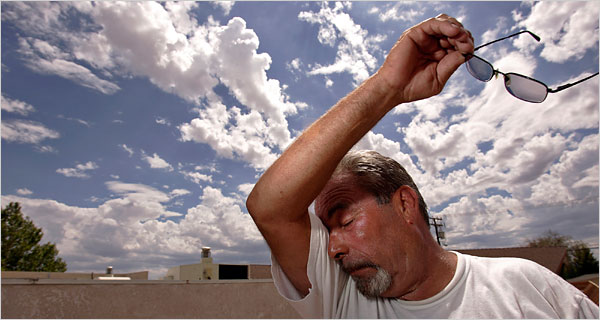
Humidity Could Be The Killer With Climate Change. Because we all know it's not the heat, it's the humidity. For the record the town of Bandar
Mahshahr, Iran experienced a suffocating heat index of 165F last
summer, so this is more than theoretical. Here's an excerpt from Cosmos Magazine: "...Coffel
found that by 2060, an estimated 600 million people will live in
regions at risk of heat waves producing wet bulb temperatures hitting 32
°C. Of these, 250 million could see heat waves with wet-bulb
temperatures of 33 °C, and 50 million could see 34 °C – one degree shy
of the limit. Even if these areas are never truly rendered
uninhabitable, people living there will have to make major lifestyle
changes, says Radley Horton, another Columbia climate scientist involved
in the project. Outdoor labour will become increasingly difficult, for
example: “We will see more [rest] breaks, more people working overnight,
changes in clothing, less strenuous activity...”
Measuring Ocean Heating is Key to Tracking Global Warming. Here's an excerpt from a story authored by St. Thomas University climate scientist John Abraham at The Guardian: "...The
answer to this question is clear, unassailable and unequivocal: the
Earth is warming because the energy is increasing. We know this because
the heat shows up in our measurements, mainly in the oceans. Indeed the oceans take up more than 92% of the extra heat.
The rest goes into melting Arctic sea ice, land ice, and warming the
land and atmosphere. Accordingly, to measure global warming, we have to
measure ocean warming. Results for 2015 were recently published by Noaa
and are available here. A recent paper
by Karina von Schuckmann and her colleagues appeared in Nature Climate
Change, and provides an excellent summary of our knowledge of the energy
balance of the Earth and recent advances that have been made..."
Chance of Extreme Flooding Up By 43% Because of Global Warming, Scientists Warn.
The study referenced is focused on Britain, but there is now little
doubt that increased CO2 and warming is pumping more water vapor into
the atmosphere, more fuel to "juice" storms. Here's an excerpt from Tech Times: "...Now,
man-made greenhouse gas emissions have upped the chances of extreme
flooding by 43 percent, scientists said, as increasingly warmer
temperatures hold larger
amounts of moisture that lead to heavier downpour. "What was once a 1
in 100-year event in a world without climate change is now a 1 in
70-year event," said Oxford
University's Friederike Otto, co-author of the report. Their paper is
the first research to look into the likely role of climate change in the
winter flooding of Somerset Levels..."
Image credit above: "Global
warming may unleash devastating and extensive flooding, scientists
warn. As levels of human-induced greenhouse gas emissions increase, the
chances of extreme flooding also goes dangerously high." Image: NASA.
No comments:
Post a Comment